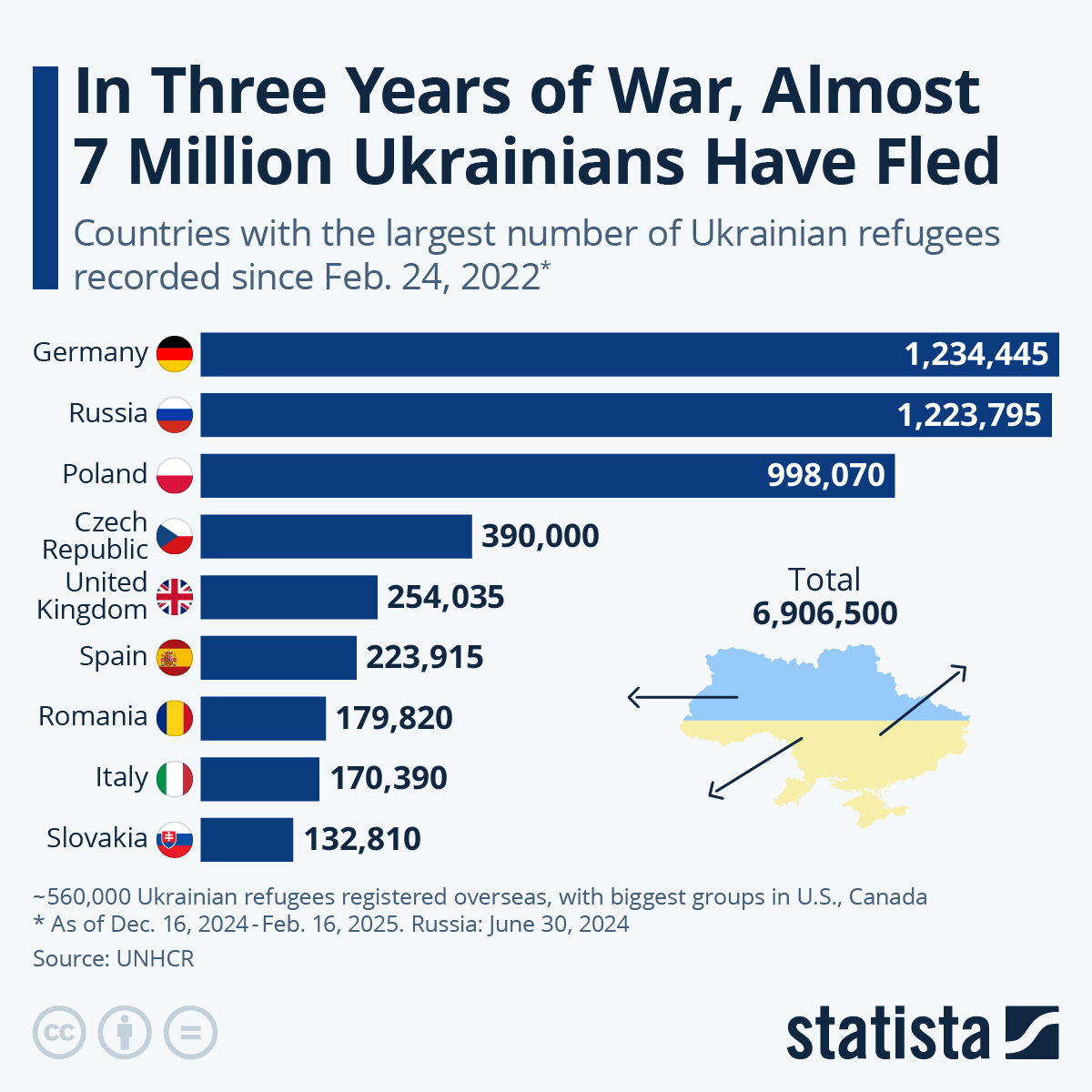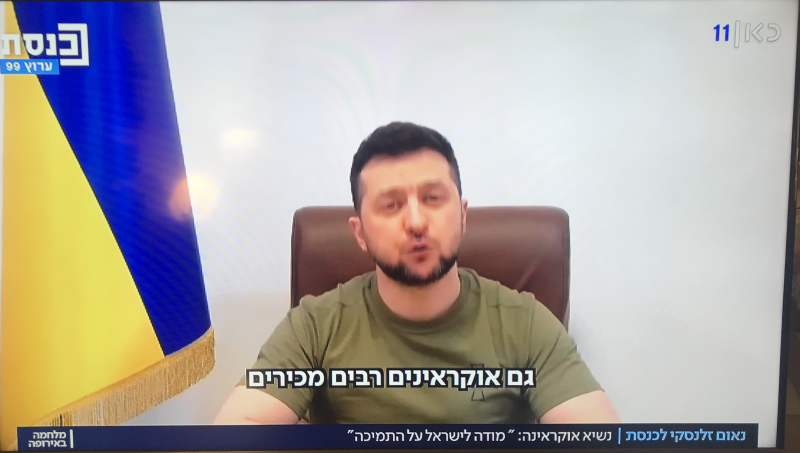
As of June 2, 12 p.m. CET, around 6.8 million Ukrainians have left the nation to seek refuge from the Russian assault, either permanently or temporarily. Based on data from the United Nations High Commissioner for Refugees (UNHCR), this map shows that most refugees have crossed into Poland.
According to government data, around 3.6 million migrants have arrived at Ukraine’s western border on foot, bus, automobile, or rail in search of safety from the Russia-Ukraine conflict.
Apart from Poland, Romania and Hungary have borne the brunt of the refugee influx among Ukraine’s neighbors in recent weeks. According to the UNHCR, around 2.2 million individuals have already returned to Ukraine. Because it is unclear whether these moves are temporary or permanent, cross-border movements remain extremely unpredictable due to the country’s turbulent environment, the statistic has not been deducted from the total.
Will you offer us a hand? Every gift, regardless of size, fuels our future.
Your critical contribution enables us to maintain our independence from shareholders or wealthy owners, allowing us to keep up reporting without bias. It means we can continue to make Jewish Business News available to everyone.
You can support us for as little as $1 via PayPal at office@jewishbusinessnews.com.
Thank you.
Following failed attempts to seize control of key power centers such as Kyiv, President Putin has turned his attention to the Eastern Ukrainian regions of Luhansk and Donezk in an attempt to expand the territory occupied. These states have not been recognized as independent by 192 members of the United Nations.
 You will find more infographics at Statista
You will find more infographics at Statista
Statistics and data about the Russia-Ukraine war in 2021-2022
Statista’s Research Department published this on May 17, 2022.
Ukrainian officials announced in the fall of 2021 that the Russian government had stationed 100,000 troops near Ukraine’s border.
On February 21, 2022, Russian President Vladimir Putin said that Russia recognized the separatist Donetsk and Luhansk People’s Republics’ independence (DPR and LPR). Three days later, Putin began a military campaign on Ukraine, ostensibly to protect Donbas citizens from the Ukrainian government. Russian military has attacked key cities and infrastructure in Ukraine as a result of the invasion.
This article gives historical context for the battle. A separate website has up-to-date information on the Russia-Ukraine conflict.
After 2014, Russian-Ukrainian relations
The events of 2021 and 2022 are part of a larger dispute between the two neighboring countries that began in 2013.
Following the Euromaidan demonstrations in Ukraine in November 2013, Five months later, Russia seized Crimea and Sevastopol from Ukraine in March 2014, justifying its move with the results of a referendum that most nations across the world did not recognize as legal. Furthermore, since 2014, military operations between DPR and LPR have been conducted with the help of Russia and the Ukrainian government.
In 2015, delegates from Russia, Ukraine, the Organization for Security and Cooperation in Europe (OSCE), the DPR, and the LPR signed the Minsk Agreement (Minsk II), which comprises a series of steps to achieve a ceasefire in eastern Ukraine. However, it has yet to be implemented.
A discussion concerning NATO’s eastward expansion
Since 1999, the North Atlantic Treaty Organization (NATO) has accepted 14 new members from Eastern Europe and the Balkans. NATO countries decided in 2008 at the Bucharest Summit that Ukraine and Georgia would join the alliance in the future. According to NATO’s “open-door policy,” any European country that can complete membership obligations and contribute to Euro-Atlantic security might join the organization.
The Russian administration issued a list of requests to Western nations in December 2021, including a legally enforceable commitment that NATO would not expand farther east. According to Russia’s Foreign Minister, Sergey Lavrov, Ukraine’s participation in NATO is a “red line” for Russia since it would imply NATO forces stationed near the Russian border.
Statistics and information about the Russia-Ukraine war in 2022
Statistics and information about the Russia-Ukraine war in 2022
On February 24, 2022, Russia launched an invasion of Ukraine. Russian soldiers launched attacks in key cities across Ukraine, including Berdyansk, Chernihiv, Kharkiv, Odesa, Sumy, and Kyiv. Western officials claimed that the conflict might be the most extensive in Europe since 1945.
A second page delves into the conflict’s history. As of June 1, the Office of the United Nations High Commissioner for Human Rights (OHCHR) had confirmed 4,169 civilian fatalities in Ukraine during the conflict. The conflict caused a humanitarian disaster, with thousands of Ukrainians fleeing to the west and abroad. As of May 29, neighboring Poland had the most refugees, with over 3.6 million, followed by Romania, Russia, and Hungary.
How does the military of Russia and Ukraine compare?
Russia’s active military troops were more than four times that of Ukraine. Russia had the world’s fourth-largest military budget in 2020, at about 62 billion US dollars, compared to Ukraine’s under six billion US dollars.
As of 2022, Russia’s entire aviation fleet was 13 times greater, its armored vehicles 2.4 times larger, and its naval fleet 16 times larger than Ukraine’s.
The Ukrainian government has acquired weaponry from NATO nations as well as military equipment from Finland and Sweden, which are not members of NATO. During the invasion, the Russian leadership was said to have asked China for military assistance.
International repercussions
Western nations imposed sanctions on Russia, including members of the European Union (EU), Switzerland, the United Kingdom (UK), and the United States (US). The sanctions targeted the banking industry, people associated with the government, and high-tech exports to Russia in particular.
The EU also barred Russian planes from using its airspace and imposed commercial sanctions on the rebel Donetsk and Luhansk People’s Republics.
The United States barred transactions with Russia’s Central Bank and sanctioned persons in Belarus for helping in the invasion. Germany has suspended the certification of the Nord Stream 2 gas pipeline. Additional sanctions have been issued by Albania, Australia, Canada, Japan, Kosovo, North Macedonia, Singapore, South Korea, and Taiwan. China and India didn’t take sides in the conflict, but Belarus, Cuba, Iran, Myanmar, Syria, and Venezuela did.
Economic ramifications
Following the invasion, the Russian ruble’s value versus the US dollar and euro fell to an all-time low. The Central Bank of Russia interfered in foreign exchange markets to regulate the currency. Oil and gas prices rose due to the United States’ restriction on Russian energy imports and the EU’s proclaimed determination to lessen their reliance on Russian energy.
In the third quarter of 2021, Russian gas shipments via the Ukraine transit route alone amounted to 11% of the EU’s net extra-EU gas imports. Russia and Ukraine are two of the world’s largest wheat exporters.
Russia also exported the sixth-most aluminum and was the top producer of palladium. As a result of the conflict, hundreds of large foreign corporations, such as Apple, H&M, Ikea, Inditex, and McDonald’s, ceased operations in Russia.





